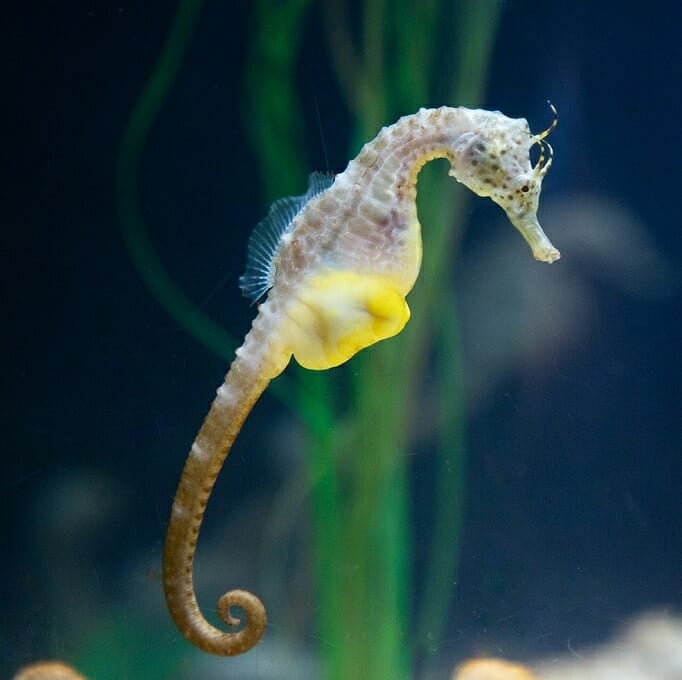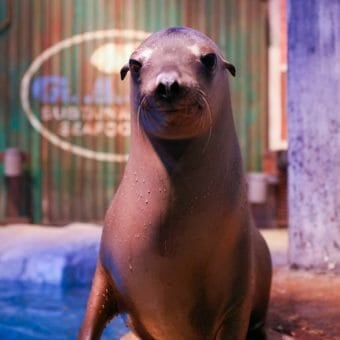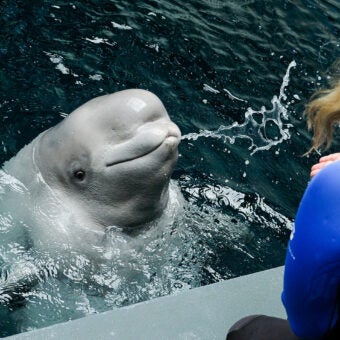-
Size
7 inches (18 cm) -
Diet
Small crustaceans -
Range
Southwest Pacific -
Habitat
Rocky reefs in shallow waters
Physical Characteristics
- Males display a prominent round belly, females are usually more slender.
- Male is distinctive because of its large brood pouch.
- Coloration ranges from black to yellow or tan.
- Individuals may display dark markings on its body.
- Largest seahorse species in the waters around Australia, reaching a common length of 7 inches (18 cm).
Animal Fun Fact
The male big-bellied seahorse is distinctive because of its large brood pouch.
Diet / Feeding
- Diet consists of small crustaceans such as copepods and other zooplankton.
- Feeds nocturnally by sucking prey into its bony tubular snout with a flick of the head.
- Has no teeth or stomach. Prey is swallowed whole and passes quickly through the digestive system.
Range / Habitat
- Occurs in the Southwest Pacific around Australia and New Zealand.
- Typically found in rocky reefs in shallow waters among the sea grass beds and weeds, but can also be found attached to sponges and colonial hydroids in open water.
- The juvenile is pelagic (lives in open water).
Reproduction & Growth
- Ovoviviparous: the female deposits her eggs in the male’s brood pouch where they are fertilized and remain until they hatch.
- Upon hatching, fry resemble miniature adults. They are released into the water column where they drift about in open water as juveniles.
- The juvenile big-bellied seahorse will also occasionally attach itself to mats of drifting seaweed.
Conservation Status
- “Least Concern” on the IUCN Red List
Additional Information
- Also known as “pot-bellied seahorse.”
- Proficient at camouflage and is usually difficult to spot in its natural habitat.
- Has been observed congregating in large groups at night.
- Big-bellied seahorses are proficient swimmers and can swim longer distances in comparison to their other seahorse relatives.
Sources
- www.fishbase.org
- www.iucnredlist.org/apps/redlist/details/10072/0
- Seahorses, Pipefishes and their Relatives, Kuiter, Rudie H.







